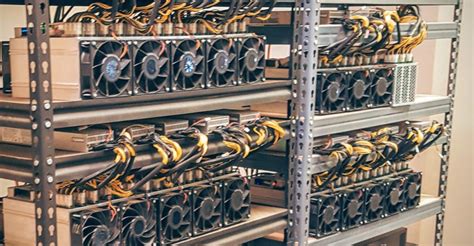Ethereum: The End of the Road for ASIC Mining?
The rise and fall of a technology is often defined by its limitations. In the world of cryptocurrency, one notable example is the transition from Application-Specific Integrated Circuit (ASIC) mining to more efficient alternatives. For years, ASIC miners have dominated the space, but are they still the most effective way to mine cryptocurrencies like Ethereum? Let’s delve into the history of mining and explore what makes ASICs tick before we consider alternative options.
The Rise of ASIC Mining
It all started in 2014 when the first Bitcoin fork from the proof-of-work (PoW) consensus algorithm, SHA-256. This led to a surge in demand for specialized hardware that could process these complex mathematical equations efficiently. As the network grew, so did the need for more powerful mining equipment.
The introduction of Graphics Processing Units (GPUs) in 2013 marked an inflection point. Their ability to perform many calculations simultaneously made them well-suited for cryptocurrency mining. However, their power consumption and heat generation proved to be a challenge. As the network expanded further, GPUs began to show their limitations.
GPU Mining: A Step Up?
GPUs were initially favored because of their performance advantages. However, as the network grew, so did the energy consumption of individual GPUs. This led to increased costs for electricity and heat dissipation. Additionally, GPUs have a relatively short lifespan before they need to be replaced or upgraded.
In response to these challenges, the mining community turned to more efficient alternatives. The introduction of Field-Programmable Gate Arrays (FPGAs) in 2015 offered a potential solution. FPGAs are programmable integrated circuits that can be reconfigured for specific tasks, including cryptocurrency mining.
FPGA Mining: A More Efficient Alternative?
FPGAs were initially seen as the next step up from ASICs. They offer several advantages over traditional GPUs:
- Energy Efficiency: FPGAs consume significantly less power than GPUs, making them ideal for high-performance computing applications like cryptocurrency mining.
- Upgradability: FPGAs can be easily reprogrammed to perform different tasks, extending their lifespan and reducing electronic waste.
- Flexibility: FPGAs can handle a wide range of computations, from simple hash functions to complex algorithms.
However, the adoption of FPGAs has been slower than expected. Despite their potential advantages, many mining operations continue to rely on ASICs due to their lower upfront costs and higher performance per watt.
The Future Optimizations
So, what future optimizations can occur after FPGA mining? While FPGAs have shown promise, there are still significant challenges to overcome:
- Advancements in Hardware
: New technologies like Application-Specific Integrated Circuit (ASIC) 2.0 will provide even more efficient and cost-effective options.
- Software Optimizations: Improvements in software for both ASICs and FPGAs will enable better performance and reduced power consumption.
- Sharding and Scalability

: The increasing complexity of cryptocurrencies like Ethereum necessitates more scalable solutions that can handle the growing demand.
In conclusion, while ASIC mining has been successful in driving innovation in the cryptocurrency space, it’s time to consider alternative options. As technology advances, we can expect even more efficient and cost-effective alternatives to emerge. FPGAs, for now, offer a promising solution, but their adoption will depend on several factors, including advancements in hardware and software optimizations.
The End of the Road?
While ASIC mining still holds a significant market share, it’s essential to acknowledge that its limitations are becoming increasingly apparent.
Leave a Reply